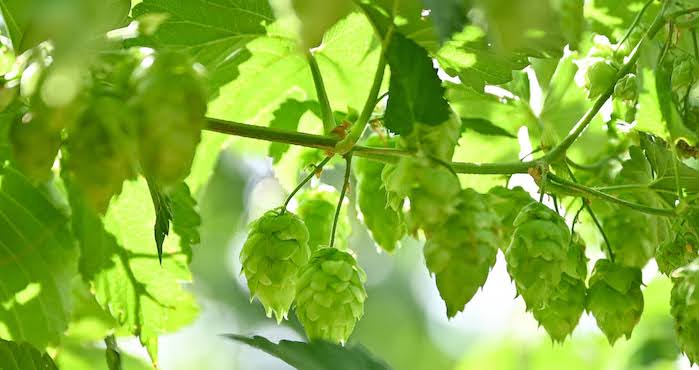Hop Science Newsletter (March 2016)
In this issue: an increasing number of bittering compounds, and research to determine whether late or dry hopping affects any of the 76 measured metabolites.

NEW INTERNATIONAL CALIBRATION STANDARD FOR ICS-H2 FOR HEXAHYDROISO-ALPHA ACIDS IS NOW AVAILABLE
Click here to read the full article.¹
GET THEM ALL WITH ONLY ONE RUN!
As a result of new research, the number of bittering compounds identified from hops is increasing. With dry hopping the bitter contribution of isohumulinones should not be neglected. This British research team established an HPLC-method working with a gradient elution protocol and different wavelengths that allows the detection of a full spectrum of important bitter acids: isohumulinones, alpha-acids, iso-alpha-acids and also the reduced iso-alpha acids.²
DID YOU EVER WONDER WHAT DRY HOPPING DOES FOR THE YEAST PURINE METABOLISM?
This was the question of a US research team. They wanted to determine whether late or dry hopping affects any of the 76 measured metabolites. They found three were significantly affected by the hopping method: deoxyadenosine, adenine and adenosine. These compounds are released from the malt during mashing by nucleotidases and nucleosidases, respectively. Adenine was significantly higher in the dry hopped brews than the late hopped brews after primary fermentation and secondary fermentation. Deoxyadenosine and adenosine were significantly lower in the dry hopped beers at these time points. Adenine has been shown to decrease by 78% in the first eleven hours of fermentation using S. cerevisiae strains, whereas with the lager yeast Saccharomyces pastorianus, adenine concentrations dropped by 93% after one day of fermentation. These results suggest that dry hopping may liberate compounds that block adenine uptake, which the yeast cells then compensate for by converting 2’-deoxyadenosine and adenosine into adenine. The elevated adenine probably would not contribute to beer flavour. However, redirecting the purine pathway to produce adenine may affect DNA and RNA synthesis, which could have repercussions for the health and vitality of the yeast for subsequent propagations.3
EVENTS
• April 15th-16th: Hoppy Days in Perugia, Italy (2-day course presented in Italian)
• June 3rd-4th: Hops Academy goes to Chile
• August 23rd: Spend a Happy Hoppy Day in the UK at Paddock Wood, Kent
For more info, please visit www.hopsacademy.com
HBC 291: The U.S. approach to European Nobility!
The European hop growers and brewers would be shaking their heads thinking that the U.S. would be so bold as to claim a nobility in a hop developed on this side of the pond, but if there was ever a candidate, HBC 291 gets the vote. HBC 291 has a personality borne from the soil of the Yakima Valley which has produced many of the outrageous U.S. varieties that have recently gained favor in the craft brewing realm. HBC 291 shows some of this impetuousness, but it’s a personality trait that becomes most evident after you’ve taken some time to get to know this hop and a beer produced with it.
No, HBC 291 doesn’t have the distinctive European noble aroma, but instead, a floral, herbal earthy and slightly fruity character that’s distinctive in its own right – and that rightly could be classified as an American noble hop with a bit of an attitude.
REFERENCES:
1. Biendl, M., Foster, R., Brewing Science Jan/Feb 2016, http://www.brewingscience.de/index.php?tpl=table_of_contents&year=2016&edition=0001%2F0002&article=87529
2. Oladokun, O. et al: An improved HPLC method for single-run analysis of the spectrum of hop bittering compounds usually encountered in beers, Journal of the Institute of Brewing Volume 122, Issue 1, pages 11–20, 2016, http://onlinelibrary.wiley.com/doi/10.1002/jib.299/abstract
3. Spevacek, A., et al: Beer metabolomics: molecular details of the brewing process and the differential effects of late and dry hopping on yeast purine metabolism, Journal of the Institute of Brewing, Volume 122, Issue 1, pages 21–28, 2016, http://onlinelibrary.wiley.com/doi/10.1002/jib.291/abstract
